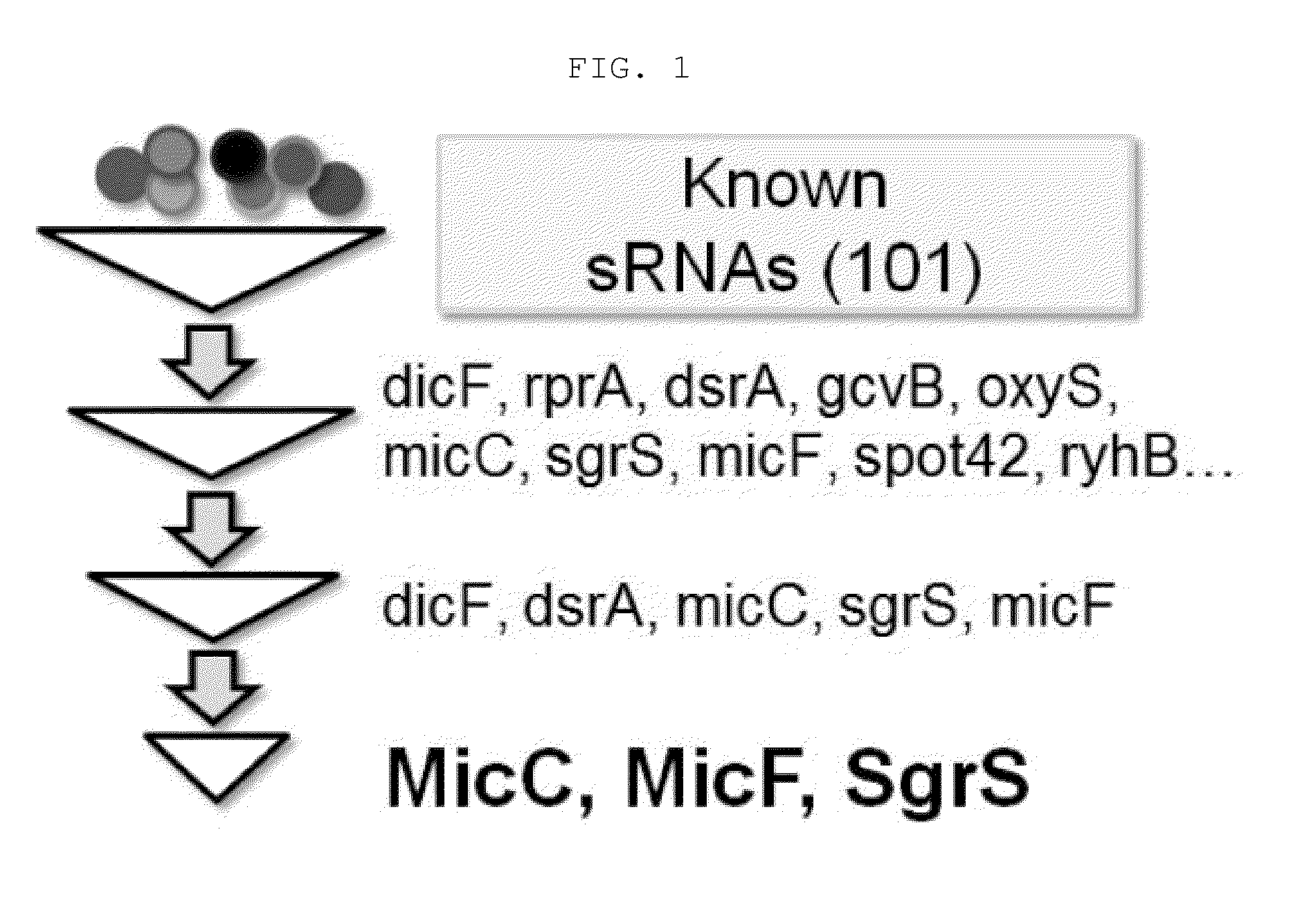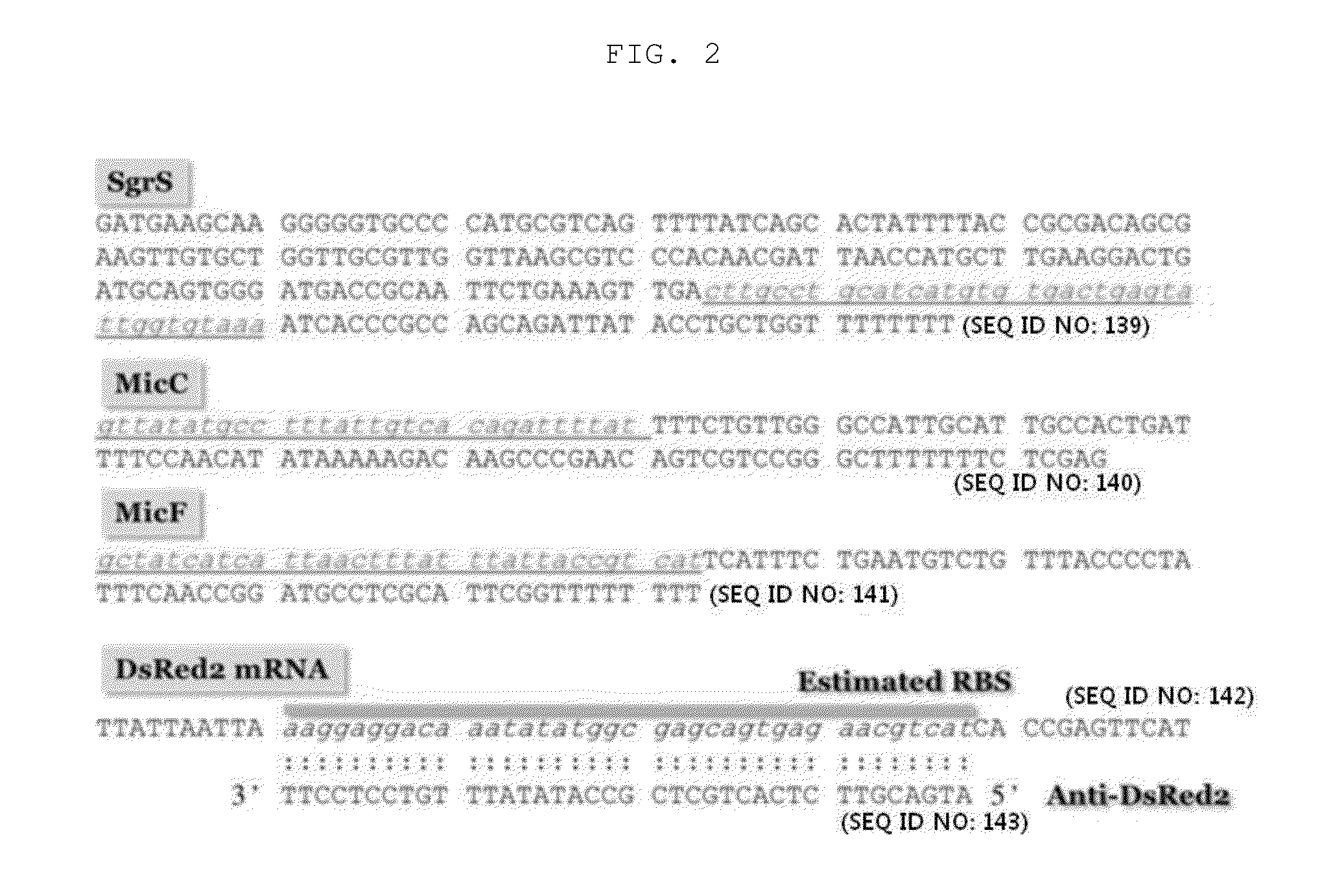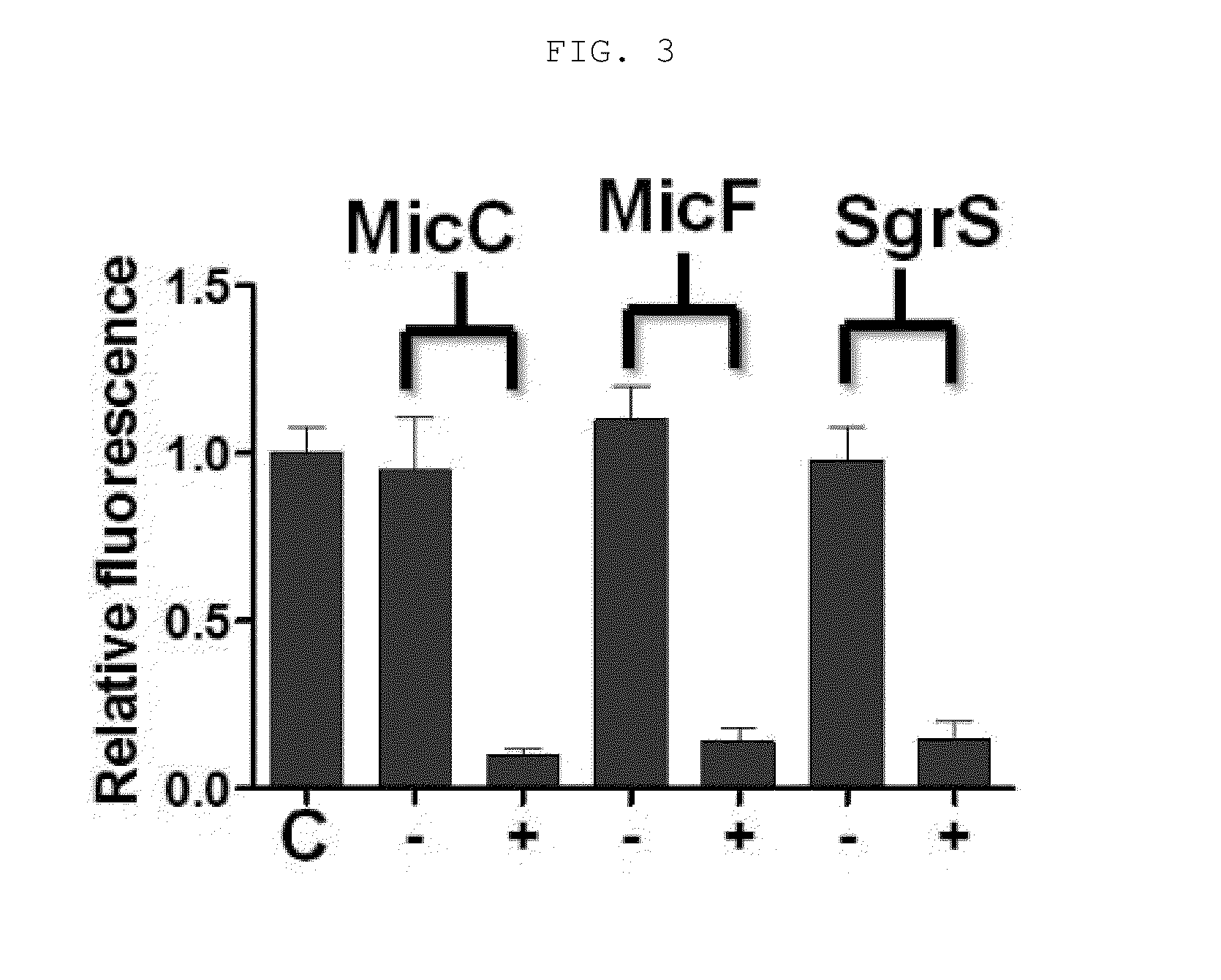Novel synthesis-regulating srna and method for preparing same
a technology of synthesis regulation and srna, which is applied in the field of customized srna, can solve the problems of incomplete loss of gene function, long time required for gene deletion, and interference with the development of metabolic engineering, and achieve the effect of high efficiency
- Summary
- Abstract
- Description
- Claims
- Application Information
AI Technical Summary
Benefits of technology
Problems solved by technology
Method used
Image
Examples
example 1
Examination of Performance of Synthetic sRNA
[0124]1-1: Construction of Synthetic sRNA and Construction of pWAS Plasmid for Regulation of Expression
[0125]A basic plasmid as shown in FIG. 18 was constructed, in which an expression of a synthetic sRNA was being inhibited, but could be effectively expressed if required.
[0126]In the pWAS plasmid of FIG. 18, the synthetic sRNA can be constructed by inserting a target gene mRNA-binding region into a promoter (PR) and a MicC Hfq binding region by site-directed mutagenesis.
[0127]The restriction enzymes used in this Example and the following Examples were purchased from New England Labs (USA), and PCR polymerase was purchased from Invitrogen (USA). Other reagents were indicated separately.
[0128]First, PCR was performed using a pKD46 plasmid (GenBank AY048746.1 (Datsenko et al, PNAS, 97(12): 6640-6645, 2000)) as a template and primers of SEQ ID NOS: 2 and 3, and the araC-PBAD promoter was cloned into a pWA plasmid (FIG. 20, SEQ ID NO: 1) using...
example 2
Screening of mRNA Position Effective for Function of Synthetic sRNA
[0142]In order to determine the position of binding to mRNA, effective for the stable function of synthetic sRNAs, synthetic rRNAs were constructed using the pWAS plasmid as a template so as to bind to various sites of DsRed2.
[0143]Regions, which are introduced into each of synthetic sRNAs and base-pair with DsRed2 mRNA, were amplified by PCR using the following primers in the same manner as described in Example 1-3 and were introduced into the pWAS plasmid comprising the Hfq binding site of MicC.
[0144]In FIG. 4, sequence A was obtained using primers of SEQ ID NOS: 27 and 28; sequence B1 was obtained using primers of SEQ ID NOS: 33 and 34; sequence B2 was obtained using primers of SEQ ID NOS: 35 and 36; Cl was obtained using primers of SEQ ID NOS: 37 and 38; C2 was obtained using primers of SEQ ID NOS: 39 and 40; D1 was obtained using primers of SEQ ID NOS: 41 and 42; D2 was obtained using primers of SEQ ID NOS: 43 a...
example 3
Construction of sRNAs for Other Target mRNAs and Measurement of Cross-Reactivity
[0148]In order to examine whether the sRNA according to the present invention can inhibit the expression of mRNA of genes other than DsRed2, a sequence complementary to the RBS of mRNA of each of the LuxR, AraC and KanR gene was inserted into the MicC structure by site-directed mutagenesis so as to bind to the RBS. The sequence complementary to the RBS of each of the target mRNAs is underlined and indicated by a red color in FIG. 6.
[0149]The synthetic sRNA Anti-LuxR was constructed by site-directed mutagenesis using the pWAS plasmid (containing the MicC-based structure) as a template and primers of SEQ ID NOS: 57 and 58, and Anti-AraC was constructed using primers of SEQ ID NOS: 59 and 60, and Anti-KanR was constructed using primers of SEQ ID NOS: 61 and 62. In order to examine the expression level of each of the genes, a fusion protein of each gene with DsRed2 was constructed. For this purpose, PCR was ...
PUM
| Property | Measurement | Unit |
|---|---|---|
| concentration | aaaaa | aaaaa |
| energy | aaaaa | aaaaa |
| resistance | aaaaa | aaaaa |
Abstract
Description
Claims
Application Information
 Login to View More
Login to View More - R&D
- Intellectual Property
- Life Sciences
- Materials
- Tech Scout
- Unparalleled Data Quality
- Higher Quality Content
- 60% Fewer Hallucinations
Browse by: Latest US Patents, China's latest patents, Technical Efficacy Thesaurus, Application Domain, Technology Topic, Popular Technical Reports.
© 2025 PatSnap. All rights reserved.Legal|Privacy policy|Modern Slavery Act Transparency Statement|Sitemap|About US| Contact US: help@patsnap.com



